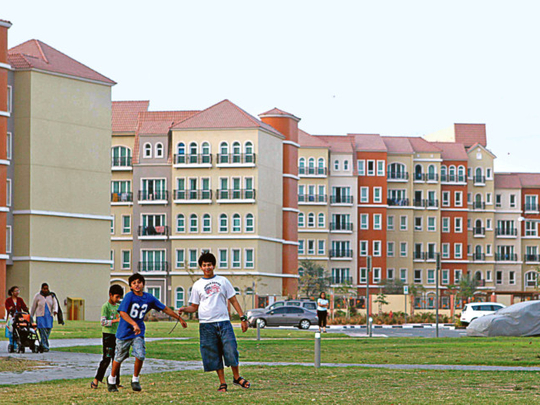
Dubai: As the volume of transactions have started to fall further, with prices closely following suit (in certain freehold areas, prices have already dropped by approximately 20 per cent), the question on everyone’s mind is: how long will this correction last?
As the world gets used to a paradigm of lower oil prices, the worry is whether there is a similar shift in the arc of real estate prices. As speculative activity recedes and the era of off-plan flipping comes to an end, looking at the population demographics along with the topography may provide some clues as to where the city’s industry is headed.
Since the advent of the freehold phenomena, Dubai’s population has grown by approximately 7 per cent per annum (75 per cent of the growth from net influx of people). The supply of homes has tripled from 156,000 units to 465,000 units, and the city has enjoyed a boom in asset prices, for a number of reasons, principal being single investors buying multiple properties either for rental yields and/or for holiday home purposes.
Also, as a result of the expansion of the population as it became a magnet for the immediate region in terms of employment opportunities. Given the fact that growth was fuelled by investor money, and end-users accounted for roughly 13 per cent of overall purchases at this time, it is critical to note the income demographics and match them against the supply demographics.
When this analysis is done, it appears that 22 per cent of the supply introduced in the last 12 years is accessible to only the top 2 per cent of the population. Furthermore, when velocity dynamics are introduced (the ability of units to be bought and sold readily in terms of absorption capacity) the communities that emerge on top are International City, Discovery Gardens, IMPZ, Sports City and the surrounding areas of Dubailand (Arjan, Majan, Liwan and Dubai Residential Complex).
It appears as if the structure of the market is analogous to that of an hourglass. There is a preponderance of supply at the top- and bottom end of the spectrum. If Dubai is going to move towards a dynamic where demand will be derived from end-users, and not emulate the Spanish model, then it serves to reason that the mid-income space is what needs to be catered to.
There have been more offerings in this space in recent months as developers have started to adjust, but given the weightage at the top end of the market, it is apparent that any macro price index will remain sluggish for some considerable time to come.
It is important to note that the entire advent of the freehold phenomena and the subsequent boom-bust cycle came against the backdrop of a declining dollar and rising oil prices, and only in the last year have these two relationships changed. It is reasonable to postulate that even as the influx of population continues, demand for housing will shift towards end-users.
For this to be sustainable, mortgage caps that were introduced last year may need to be relaxed in order to incentivise end-users to purchase. Perhaps, more critically, there has to be more options at the supply end that need to be offered by developers. It is this transition period that will be a challenge to navigate.
The market remains well (if not over-) supplied at the top end of the spectrum (both in the villa and apartment space) and the impact of lower oil prices and stronger dollar will undoubtedly dampen the demand from overseas investors. However, domestic demand at the mid-end remain inelastic to these macro trends, and developers and investors who capitalise on this will be amply rewarded in the years ahead.
— The writer is the Managing Director of Global Capital Partners.












